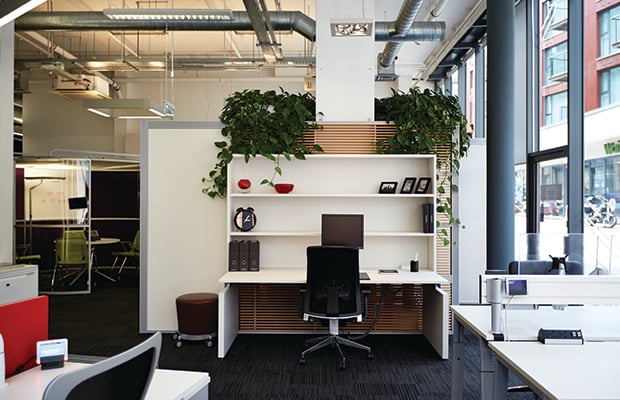Even well-established companies are recognising the need to encourage more communication within their company culture. The recent announcement from global technology giant Samsung, who indicated their intention to introduce more flexible working structures, highlights just how important the ‘start-up’ behaviours of collaboration and innovation are, even to a global leader.[1]
 This latest move to emulate the collaborative and innovative culture of a start-up comes as part of the multinational firm’s drive to regain competitiveness. The growing importance of flexibility in a world dominated by digital disruption is forcing even the largest companies to re-examine their working practices and adapt their office spaces accordingly.
This latest move to emulate the collaborative and innovative culture of a start-up comes as part of the multinational firm’s drive to regain competitiveness. The growing importance of flexibility in a world dominated by digital disruption is forcing even the largest companies to re-examine their working practices and adapt their office spaces accordingly.
You may also like to read: “5 Ways to Improve Office Collaboration.”
Samsung’s announcement highlighted that the company has relied unnecessarily on formal meetings, struggling to generate a culture of collaboration in which ideas are communicated freely and productively between staff. Whilst the company has already introduced flexible working hours last year, current employees report that work hours are still too long, an indication that the business culture at Samsung has remained largely unchanged.
In fact, many companies are struggling with the problems which Samsung is now trying to address. Relying on meetings as places to communicate can create a stultifying culture, and without providing the right spaces in which employees can collaborate, it is very difficult to change this.
At Condeco, during our work with AutoTrader, we found that introducing breakout spaces in which teams could communicate more informally had a significant impact on the working structures of the company. Previously, collaboration had only taken place in the formal setting of booked meetings. In setting out to create a more agile, digitally driven environment, the company found that the biggest catalyst for this change was the creation of a new workplace.
The importance of collaboration in the quest for innovation is widely acknowledged, but companies need to recognise that it will not happen unless the right environment is created, in which it can take place easily and naturally. Setting out an intention to change working practices is clearly a good place to start, but this must be matched by real adaptations in the workplace structure if any meaningful changes are to be achieved.
Sources
[1] http://www.reuters.com/article/us-samsung-elec-culture-idUSKCN0WQ0CP